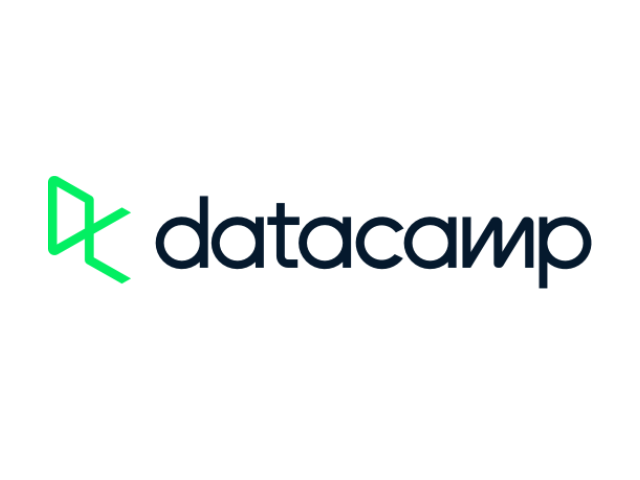
DataCamp | Data Governance: Enhancing Business Strategy and Decision-Making Capabilities!
Data governance transforms fragmented data into strategic assets by ensuring quality, security, and compliance. It empowers businesses with reliable data for smarter decisions, risk mitigation, and operational efficiency. Key steps include setting goals, securing leadership buy-in, and fostering a data-driven culture. Tools like Fivetran and Denodo streamline governance, while overcoming challenges like silos and resistance ensures long-term success.
For modern enterprises, reliable data is key to making strategic decisions. However, in reality, data is often scattered across various systems, with inconsistent quality and even security risks. These “data silos” severely hinder the efficiency and accuracy of decision-making. Data governance can integrate this fragmented data into a unified, reliable foundation, providing strong support for business decisions.
This article will explore in depth how effective data governance can transform data into a core corporate asset and enhance competitiveness.
What is Data Governance?
Data governance involves establishing a series of guidelines, regulations, and procedures to ensure the efficient management, utilization, and protection of a company’s data assets. This framework is critical for maintaining high-quality, secure, and effective data.
Within an enterprise, data management, data ownership, and data stewardship collectively build a robust data governance system:
- Data Management: Handles the day-to-day maintenance and processing of data.
- Data Ownership: Clearly assigns responsibility for specific datasets, empowering decision-makers.
- Data Stewardship: Manages data according to the owner’s directives and corporate policies.
A comprehensive data governance strategy ensures data quality and reliability by establishing clear policies, guidelines, and responsibilities. Effective governance not only builds trust and enhances decision-making but also prevents inefficiencies caused by data inconsistencies and helps companies comply with regulations while mitigating data risks.

At its core, data governance transforms raw data into a dependable asset, providing a solid foundation for informed decisions and business success.
Why is Data Governance Important?
- Ensuring Data Trustworthiness
Data governance is the cornerstone of data reliability. It establishes robust systems and structures to maintain accuracy, consistency, and completeness throughout the data lifecycle, ensuring dependable data analysis and decision-making. Without governance, data quality issues can lead to flawed analyses and costly mistakes. - Regulatory Compliance
Effective governance is essential for compliance with regulations like GDPR and CCPA, which require companies to take full responsibility for their data. Key measures include defining data ownership, implementing strict access controls, and setting data retention rules. These steps not only demonstrate compliance but also protect against breaches and misuse, safeguarding corporate reputation. - Data Security and Breach Prevention
Governance plays a vital role in preventing unauthorized access and leaks. Critical components include:- Access Controls: Restrict sensitive data to authorized personnel.
- Data Classification: Prioritize protection for core business data.
- Traceability: Track data flows to quickly identify and respond to security incidents.
As Feng Tiankai, Data Governance Lead at ThoughtWorks, notes: “As data usage grows, our control over it diminishes. Data flows within enterprises are becoming increasingly complex, and regulations are tightening accordingly.”

In a data-driven economy, robust governance helps businesses navigate complexity, ensure compliance, and protect customer rights.
Data Governance Framework
An effective framework is essential for managing data assets. It should include clear goals, principles, and structures covering the entire data lifecycle.
- Foundations
- Integrity: Stakeholders must act transparently to foster trust and collaboration.
- Ownership and Accountability: Define roles (e.g., Chief Data Officer, data stewards) to prevent gaps or overlaps.
- Strategic Alignment: Ensure the framework supports business objectives.
- Data Management
- Standardization: Consistent definitions and processes across teams.
- Quality Management: Regular monitoring and cleaning to ensure accuracy.
- Catalogs and Metadata: Centralized repositories for data discovery.
- Security and Privacy: Encryption, access controls, and compliance with regulations.
- Integration: Protocols for seamless data exchange across systems.
- Continuous Improvement
- Stewardship: Assign data stewards to oversee compliance.
- Change Management: Adapt policies to evolving needs.
- Risk and Compliance: Regular audits and controls.
- Training: Foster a culture of data literacy.
- Metrics: Measure effectiveness and identify improvements.
Data Governance Tools
Tools like Fivetran (automating data pipelines) and Denodo (data virtualization) streamline governance by automating cleaning, validation, and standardization.
Choosing the Right Tool
Consider:
- Organizational needs (e.g., security vs. management).
- Budget and scale (enterprise vs. open-source solutions).
- Integration with existing systems.
- User-friendliness and adaptability.
Implementing Data Governance
Key steps:
- Set clear goals (e.g., accuracy, compliance).
- Secure leadership buy-in by highlighting ROI.
- Develop a framework with defined roles and standards.
- Train employees and foster a data-driven culture.
- Continuously monitor and improve.
Common Challenges & Solutions
- Executive Support: Build a strong business case.
- Change Resistance: Communicate benefits and provide training.
- Data Silos: Promote collaboration and centralized repositories.
- Security Risks: Implement access controls, encryption, and audits.
Conclusion
Data governance turns fragmented data into strategic assets by ensuring quality, security, and compliance. It empowers businesses to make smarter decisions, mitigate risks, and achieve long-term success.









